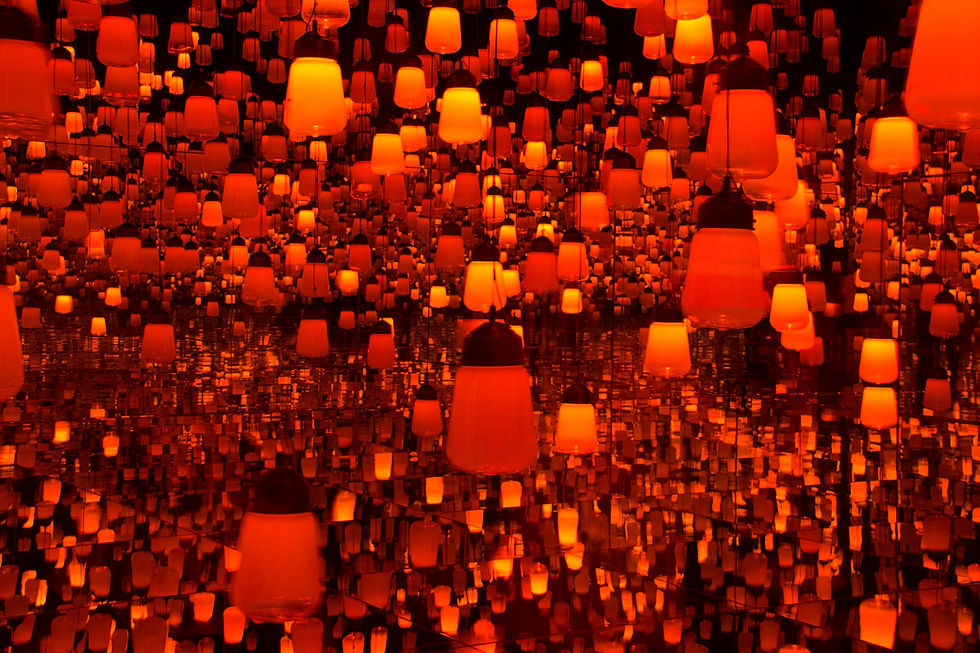5 Must-Visit Places in Cappadocia, Turkey
- Magnolia

- Jul 25, 2021
- 3 min read
Cappadocia is a historical region in Central Turkey that is famous for its "fairy chimneys" - unique, cone-shaped rock formations. The breathtaking landscape of this region was shaped as a result of volcanic eruptions that covered the whole area in a blanket of ash. The volcanic ash hardened into soft rock formations called tuff. These rock formations got their unique shapes after millions of years of erosion by water and wind. Ancient cultures inhabiting this region since the Bronze Age have dug into the soft rock formations to create cave churches, homes, and even underground towns. Cappadocia offers a great mix of natural wonder, culture, and history. Here are the top 5 attractions in Cappadocia.
1. Hot air ballooning
Cappadocia is the world's most famous destination for hot air ballooning. Hot air balloon rides are the most enchanting way to explore the magical landscape of Cappadocia. Every morning at sunrise the hundreds of hot air balloons take to the sky. The view from the ground is mesmerizing, watching the giant colorful balloons rising and soaring above the breathtaking landscape.

The hot air balloon ride is available all year round but the flights can be canceled due to the weather. The price of a balloon tour in Cappadocia depends on the duration and the season. The standard hot air balloon flight duration is one hour.
2. Goreme
Goreme is an ancient town that is literally carved into the hillside and most amazingly, people still live in this cave town inside the cave houses. It is not surprising that this town is considered to be one of the most beautiful and unique villages in the world. Many tourists choose to stay in Goreme because of its otherworldly beauty and its proximity to Cappadocia's most popular attraction - the Goreme Open-Air Museum.

Goreme offers tourists hundreds of cave hotels and guest houses. So, it is a perfect place to experience sleeping in the cave!
Location: Nevşehir Province in Central Anatolia, Turkey

3. Göreme Open-Air Museum
Goreme Open Air Museum is a UNESCO World Heritage Site and one of the main highlights of the region. This open-air museum is an area with the remains of ancient churches that were carved into the massive rock formations in the 10th to 12th centuries. Inside the cave churches, visitors marvel at Byzantine cave wall paintings and beautiful biblical frescoes in remarkably good condition. Some of these impressive frescoes date from the 3rd and 4th centuries BC! Inside the complex. 11 churches are open to the public. The most famous church of Goreme is the Karanlik Kilise or the Dark Church with very well preserved colorful frescoes.

Opening time: summer 08:00 - 19:00, winter 08:15 - 17:00
Entrance fee: 100 TL
4. Kaymakli Underground City
Kaymakli is the largest underground city in the region. It dates from the 8th-7th centuries B.C. This ancient underground city was mainly used by early Christians as a place to hide from Arab invaders. The city has several floors ( only 4 floors open to visitors) and hundreds of tunnels that are connecting different areas of this underground complex. Besides the living spaces for a large population, the city has a church, schoolrooms. kitchens, wineries, and storage places. The explorers with claustrophobia should take into account that some tunnels of the city are very narrow and low,

Location: Kaymakli town (26km south of Göreme)
5. Zelve Open-Air Museum
Zelve Open-Air Museum is the best place to explore the famous fairy chimneys that have been used by people for centuries. Past cultures have carved into these fairy chimneys and created cave dwellings that have survived to this day. Between the 9th and 13th centuries, Zelve was an important religious area, and then it was turned into a village. Zelve cave village just like every other medieval village has churches, houses, granaries, a mill, and several dovecotes. The last villagers left this cave town in 1952 due to safety concerns.

Opening time: summer 08:00 - 19:00, winter 08:00 - 17:00
Entrance fee: 25 TL
Zelve Open-Air Museum is a fascinating cave village





Comments